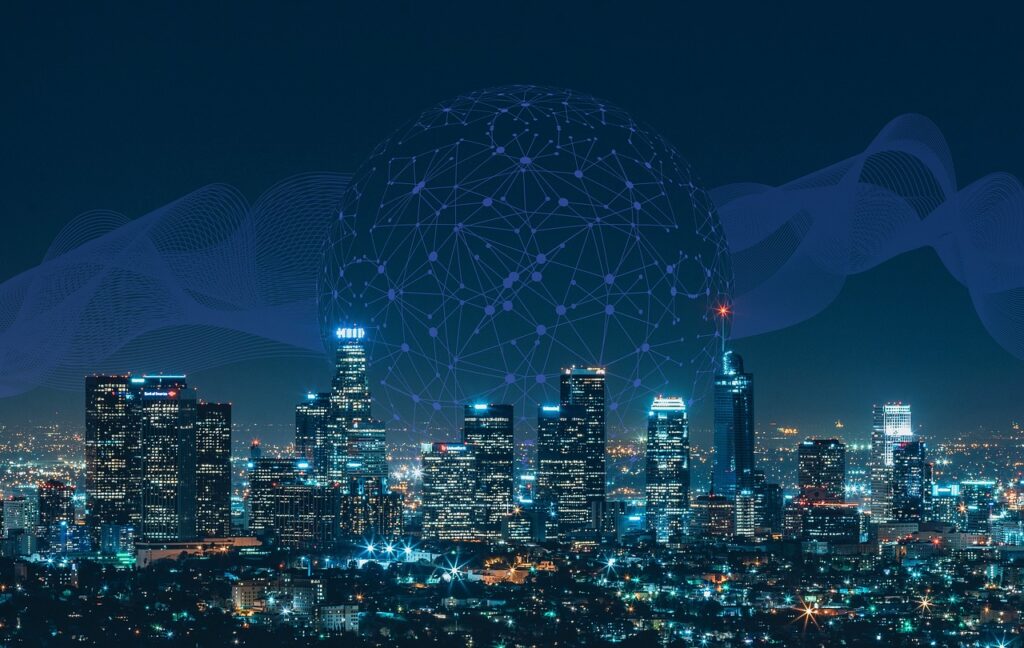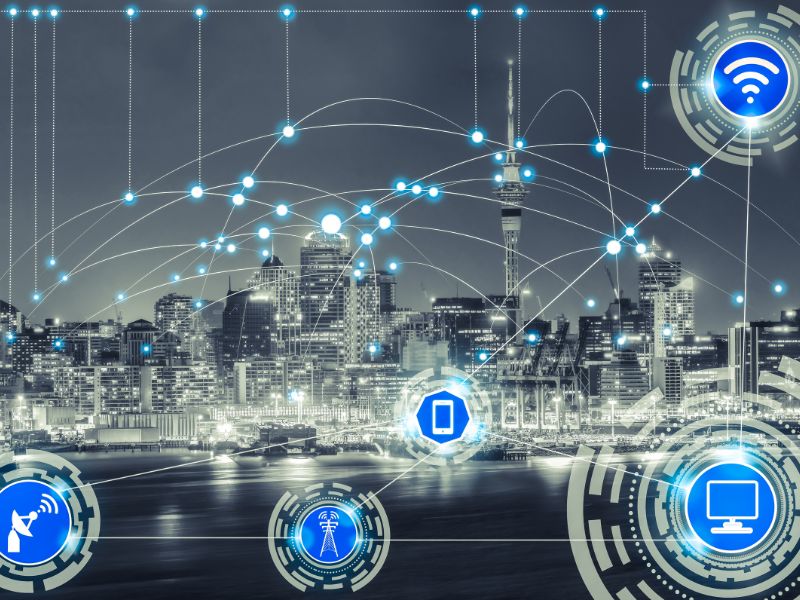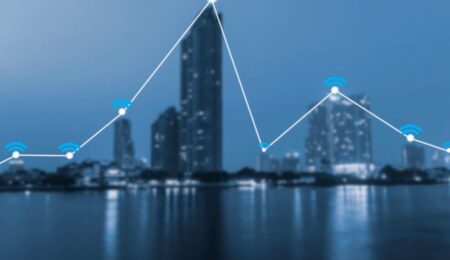Introduction
Are you sick and tired of residing in cities that date back to prehistoric times? So stop worrying because the smart city networks have arrived! Welcoming you to the linked, incredibly efficient world of smart cities. Our urban environments are about to undergo a transformation thanks to these cutting-edge networks, which will provide better infrastructure, greater public services, and increased efficiency. But what are Smart City Networks exactly? Let’s get started and find out. Hang on tight, because the journey into the future is going to be exciting!
What are Smart City Network
Become a part of the intriguing world of smart city networks, Are you ready? No? Hey, tough luck—we’re entering anyway!
The networks of the future that will connect cities in mind-boggling ways are called “Smart City Networks,” my dear reader. Simply put, these networks create a seamless web of connectivity by connecting different parts of a city together using cutting-edge technology. Cities are becoming smarter than ever because of the power of the Internet of Things (IoT), sensors, data collection, and connection technologies.
Imagine a city where everything is interconnected, from traffic signals that communicate with vehicles to trash cans that alert the waste management company when they are full. It works together to make our lives simpler and more effective, like a symphony of information.
Yet, there’s still more! Smart City are about more than just comfort. Additionally, they have the capacity to make our cities centers of innovation, resilience, and sustainability. Imagine having better public services that meet all of our needs, more durable infrastructure that will last the test of time, and increased efficiency that will help us save time and energy.
Therefore, buckle up, my dear reader, because Smart City Networks are about to transform how we live. Prepare to enter a world with smarter, greener, and more connected cities than before. The future must be embraced now!

Why Smart City Networks are the Future
Here you are in the cutting-edge world of smart city networks. You must be perplexed as to why they are constantly in the news. So allow me to educate you. Everyone wants to hang around with these networks because they are like the cool kids in town. Why, you inquire? Why? Because they bring a tonne of brilliance to the table!
First and foremost, smart city networks improve sustainability and efficiency like nobody’s business. Consider how connected everything would be in your city. The operation of everything, from traffic lights to waste management systems, would be seamless and effective. No more protracted waits at stop signs or stuffed trash cans. It’s like having your very own ***** wand to influence events!
But hold on—more! Smart city networks also enhance a city’s infrastructure. Imagine doing a radical makeover for your city. Everything has been improved to the next level thanks to superior technology and networking. Your city transforms into a high-tech utopia with intelligent buildings and transport systems. It’s like being in a science fiction movie, minus the laser cannons (unless you prefer that sort of thing, of course).
Not to mention the benefits of improved public services. With the help of smart city networks, your city can save the day like a superhero. Real-time data enables emergency services to respond more quickly and proficiently, thereby increasing their efficiency. And you, dear citizen, can use your smartphone to quickly and easily access public services. No more standing in line for hours or completing mountains of paperwork. It is comparable to having a personal assistant who tends to all of your needs.
So why are networks for smart cities the future? because they contribute to greater infrastructure, increased efficiency, and better public services. They improve the quality of life and add to its excitement. Imagine living in a linked world where your city is more intelligent than you are (sorry, not sorry). It’s time to look towards the future and get ready for a once-in-a-lifetime experience!
But hold on, before we can fully take advantage of the advantages of smart city networks, there are a few obstacles we need to overcome. So let’s get down to business and examine the parts of these networks. Keep tuned, everyone!
Components of smart City Networks
The foundation of our future, smart city networks, integrate all facets of urban life in a seamless and effective way. Three essential elements—the Internet of Things (IoT), sensors and data collection, and communication technologies—are at the core of these networks.
The Internet of Things (IoT) serves as the framework for this Network by facilitating communication between infrastructure and gadgets. Everything in cities is connected and continually exchanging data to improve processes, from lamps to trash cans. Imagine it as a large digital spiderweb, but without as many awful critters (hopefully).
The analytical part of Smart Cities involves sensors and data gathering. These sensors gather real-time information on a variety of aspects, including energy usage, traffic patterns, and air quality. City officials may make data-driven decisions and enhance the city’s overall functionality thanks to this constant influx of information. It’s like having a constant guard of invisible superheroes watching over the city.
Let’s move on to the topic of connectivity technology. This technology would be about as helpful as a chocolate teapot without a strong and dependable network. These innovations enable rapid and effective data transfer by ensuring smooth communication between various systems and devices. Connectivity technologies, which range from next-generation wireless networks to high-speed internet connections, serve as the brains of smart cities.
Smart Cities lay the groundwork for a smarter, more connected future by fusing the power of the Internet of Things, sensors and data collection, and cutting-edge connection technology. Imagine a metropolis with efficient traffic, continuous pollution monitoring, and energy usage optimization. With the help of Smart City Networks, what could seem like a sci-fi fantasy is actually becoming a reality.
Thus, keep in mind that there’s a lot more going on than you might think the next time you see a lamppost or a public transportation vehicle. Smart City Networks are continuously working to improve the efficiency, sustainability, and convenience of our cities. The future appears to be brighter and more intelligent than ever with these networks in place. The best is yet to come, so keep a watch out for additional exciting developments!
Challenges in Implementing Smart City Networks
The amazing realm of smart city networks, how I love it! These networks, which link everything from traffic lights to trash cans, sound like they were taken directly out of a sci-fi film. But let’s not let the excitement get the best of us. There will undoubtedly be some difficulties along the way, just like with any innovative invention. Let’s now go into the specific challenges that networking faces.
We are primarily concerned with privacy and security issues. Imagine that a network of sensors and cameras is watching, recording, and analyzing every action you take. Similar to being on a reality TV show, but without your consent. The possibility that all of this data could end up in the wrong hands raises concerns. The future? Perhaps your neighbor is a hacker hiding in plain sight, trying to get access to your personal data.
But hold on, things get better! Major obstacles include money and governance. A collaborative effort by numerous stakeholders, including governmental agencies and businesses, is necessary to implement a smart city network. But, obtaining funds and keeping everyone on the same page can sometimes feel like herding cats. It’s comparable to planning a group supper when each person wants to eat at a separate establishment and yet assumes that the tab will pay itself.
Not to mention legacy infrastructure and systems. You know those antiquated, cumbersome systems that have been operating for years? Indeed, they don’t exactly complement the brand-new, sparkling Smart Cities. It’s comparable to attempting to squeeze a square peg into a round hole. The process of updating and merging these outdated systems with cutting-edge technology can be difficult and time-consuming. It would be like attempting to rebuild your grandmother’s home while she insisted on preserving every single one of her priceless china dolls.
So there you have it: the wonderful difficulties encountered in putting Smart City Networks into practise. issues with governance and funding, problems with old systems and infrastructure, and privacy and security concerns. It’s a difficult path, but nothing worthwhile is ever easy, is it? So let’s connect the future, one obstacle at a time, while you buckle up and get ready for the trip.

Impact of smart City Networks on Society
This technology has the power to alter our lives and make our cities smarter and more efficient, making it more than just another tech buzzword. But what effects do these networks have on society specifically? Let’s look more closely.
First, one of the main advantages of smart cities is an improvement in quality of life. Think about how convenient it would be to live in a city where everything is connected. These networks have the potential to improve our daily lives, from smart homes that automatically adjust lighting and temperature to smart transit systems that ease traffic and boost travel.
Yet smart cities offer much more than just convenience; they have a significant positive impact on the environment. These networks contribute to a cleaner and more sustainable future by maximizing energy use, cutting waste, and enhancing urban planning. Imagine a city where all transportation is powered by renewable energy sources and traditional cars are replaced with autonomous, electric vehicles. This networking can make it a reality, thus it is no longer science fiction.
Not to mention the potential for economic expansion that these networks offer. Businesses prosper in cities that are smarter and more efficient. Smart city networks entice capital, support entrepreneurship, and generate employment prospects. Additionally, by optimizing city services and facilitating better resource allocation, these networks can save costs for both the government and its residents.
In conclusion, there are numerous social effects of smart cities. They boost our standard of living, help the environment become cleaner, and promote economic expansion. Whether we recognize it or not, the future has already arrived and is being shaped by this networking. So prepare for a smarter, more connected future by fastening your seatbelt!
Conclusion
We have now completed our informative tour of the world of smart city network. Everything from the definition of smart city networks to how they affect society has been discussed. Let’s take a moment to review the main ideas.
With their emphasis on increased productivity, better infrastructure, and better public services, smart city networks unquestionably represent the future. These networks make it possible for cities to become smarter than ever before thanks to the ***** of the Internet of Things (IoT), sensors, and cutting-edge communication technology.
Smart City Network implementation is not without its difficulties, of course. The necessity to upgrade outdated systems and infrastructure, governance and finance challenges, privacy and security concerns, and the desire to build these utopian communities can all be roadblocks.
Yet, adopting Smart City Networks will pay off in the long run. These networks have the ability to change society for the better by enhancing resident quality of life, promoting environmental advantages, and promoting economic growth.
We now hope that you have a better appreciation of the enormous possibilities that Smart City Networks hold. My friends, the future is promising and undoubtedly interconnected.
FAQs
Product Details
How does Smart City Networks work?
Sensors and other devices put in strategic locations across the city are used by smart city networks to gather data. The analysis of this data allows for the effective management of resources and services by providing useful insights. These networks make it easier for utilities, public safety, transportation, and environmental services to coordinate their efforts and communicate with one another.
What are the key features of Smart City Networks?
– Integration of various city systems
– Real-time monitoring and insights
– Optimal resource allocation
– Improved sustainability and energy efficiency
– Enhanced public safety and emergency response
What are the benefits of implementing Smart City Networks?
There are many advantages to implementing Smart City Networks, including:
– Effective traffic control and decreased congestion.
– Improved public transport infrastructure.
– Carbon footprint reduction and energy savings.
– Increased environmental sustainability and waste management.
– Enhanced security and safety.
– Improved infrastructure and public services.
Known Issues and Compatibility
Are there any known issues with Smart City Networks?
Smart City Networks are built to be dependable and strong. However like with any cutting-edge technology, occasionally problems might occur. Our committed support staff is here to help you address any issues swiftly and successfully.
What are the compatibility limitations of Smart City Networks?
Smart City Networks are very adaptable and may be made to match different metropolitan settings. However, compatibility could be influenced by the infrastructure already in place, network connectivity, and integration potential. During the planning stage, our specialists will evaluate the infrastructure of your city to guarantee seamless integration and top performance.
Customer Support
What kind of customer support is provided for Smart City Networks?
We recognize the value of dependable support for a sophisticated system like Smart City Networks. We offer devoted customer service via a number of channels, including chat, email, and phone. You can get help from our team of professionals with any questions or problems you might have.
How can I reach customer support?
You can reach our customer service representatives by calling [Phone Number] or sending an email to [Email Address]. Our support staff works [Operating Hours] and aims to respond quickly to any questions or technical problems.
Troubleshooting
What should I do if I encounter connectivity issues with Smart City Networks?
Please examine the following steps if you notice connectivity problems with smart city networks:
1. Verify that every sensor and device is powered and connected correctly.
2. Verify internet and network accessibility.
3. Restart the gadgets or sensors that aren’t connecting.
4. For additional assistance, consult the user manual or get in touch with our customer care.
How can I troubleshoot data sync problems in Smart City Networks?
Follow these instructions if you experience problems with data synchronisation in Smart City Networks:
1. Ensure that sensors and gadgets are powered on and connected correctly.
2. Verify internet access to confirm data transmission and reception.
3. Restart any sensors or equipment that isn’t synchronising data.
4. To get more help troubleshooting, get in touch with our customer support team if problems continue.
What can I do if I need help with configuring Smart City Networks for my specific city?
To assist you configure Smart City Networks for your particular city’s needs, our knowledgeable team is available. To contact our customer service or consulting team, please send an email with specifics about your needs and goals. They’ll support a successful implementation and walk you through the configuring process.




Leave a Reply